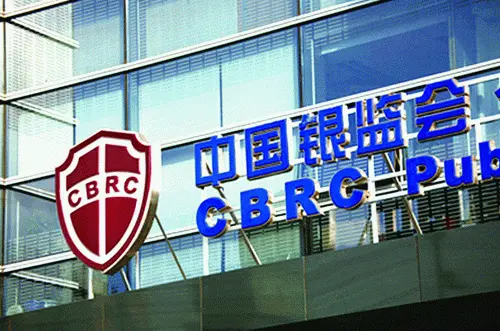Over the past seven months, more than 100,000 Buicks have rolled off the assembly line of a new plant erected on a once-desolate scrap of wasteland on the outskirts of Wuhan, a fast-sprawling metropolis on the Yangtze River.
Surrounded by roads bearing names such as Chevrolet Boulevard and Buick Street, the 1.1 billion U.S. dollar plant is Shanghai GM's fourth manufacturing facility.
Shanghai GM is a joint-venture between General Motors and China's SAIC Motor Corp.
A second phase investment of 1.2 billion dollars will more than double the plant's annual capacity to 480,000 cars by 2017. Moreover, 1.6 billion dollars will back projects capable of producing 1.68 million engines annually by 2018, said a spokesperson for the plant.
Though China's auto market has slowed to single-digit growth after years of breakneck expansion, Shanghai GM has set its sights on China's inland regions, aiming to sell up to 3 million vehicles in 2020.
Wuhan is sometimes called the Oriental Chicago due to its central location and developed transportation networks. Now the city is looking to build itself into China's Detroit by attracting more global big names to set up shops.
Facing the GM plant across the Yangtze in Wuhan is a Renault plant set to start producing SUVs, following a 1.3 billion dollar partnership between Renault SA and the local state-owned Dongfeng Motor Corp. Dongfeng already has joint ventures with PSA Peugeot Citroen and Honda Motor Co., to name a few.
Both the GM and Renault investments, among others, will vitalize Wuhan, which has set its sights on more than doubling its total production capacity to 3 million vehicles by 2017.
Li Linqing, vice director of Wuhan Auto Industry Office, said the industry was a big employer.
"This is what the world's second largest economy needs to create jobs and upgrade its manufacturing," said Li.
Building race
Rising incomes have fueled an auto-buying boom in China. As major domestic automakers rush to cash in, foreign companies are eyeing expansion projects with local partners, adding to competition in the world's biggest auto market.
Chongqing, located 1,000 kilometers upstream from Wuhan on the Yangtze, also claims to be Detroit of the East. Auto production in the southwestern municipality reached 2.6 million units last year. Its total capacity will top 4 million in 2017, according to local authorities.
Much of the increase will be contributed by the local Chang'an Auto Group and its joint venture with Ford Motor Co., as well as from newcomers like Beijing Hyundai Motor Co. The South Korean carmaker's joint venture is simultaneously constructing its fourth and fifth plants in Hebei Province and Chongqing, hoping to increase Hyundai's capacity in China to 1.65 million units by 2018.
Sitting at the mouth of the Yangtze, Shanghai is home to SACI Motor Corp., which has partnerships with both Volkswagen AG and General Motors. With auto output standing at 2.4 million vehicles last year and automakers' regional headquarters gravitating to the city, Shanghai defines itself as a hub of automotive manufacturing and R&D.
Boosted by investments from Shanghai Volkswagen and China Geely Group, the owner of Volvo Cars, the neighboring port city of Ningbo is also fast shaping up as an auto city with a projected capacity of 1 million units by 2018.
Other Chinese cities with annual output of more than 1 million units are Beijing, Changchun and Shenyang in the rust-belt northeast and Guangzhou in the south. In addition, each and every province along the Yangtze River between Shanghai and Chongqing has identified the auto industry as a "pillar industry."
Concerns
As China's economic growth moderates, its auto industry has encountered headwinds. Nationwide vehicle sales in the first eight months finished even with the year-earlier period and sales in July dropping to 7.1 percent to a 17-month low, according to the Chinese Automobile Manufacturers Association.
Automakers cut production in response to the sluggish demand. Shanghai GM built 7.1 percent fewer cars in August than it had a year earlier, while FAW Volkswagen, the German auto giant's other joint venture in China, gave its workers a long holiday, a move deemed to be an attempt to relieve inventory pressure.
SACI Motor Corp. said in a filing to the local bourse that the situation will "remain grim" in the short term and that auto sales in the country are predicted to climb to 24.1 million vehicles for the full year, slightly above last year's 23.5 million.
The industry's concerns are deepened by the additional production capacity of several million units in the coming years.
Some of the less competitive local brands and cities unselective in their investment choices will be exposed to overcapacity risks, warned Dong Yang, general secretary of the CAAM.
"But overall overcapacity does not exist because China has a low level of car ownership and relatively rapid economic growth," said Dong.
Jia Xinguang, an independent auto analyst in Beijing, said auto sales were still far from saturated and vehicle restrictions haven't been introduced in less-developed central and western China, where major cities could develop their auto industry.
"It's ridiculous to follow the Detroit model, considering its decline and bankruptcy," said Jia.
"Wuhan will draw a lesson from the U.S. motor city," said Li. "Though the auto industry represents 20 percent of Wuhan's economy, we also have some other fast-growing sectors, including optics and telecommunication, to sustain our long-term growth."
For ordinary people, overcapacity sounds irrelevant. The most visible impact is traffic jams.
"I'm glad to see the Shanghai GM plant bring about big changes to where I've lived for life," said Xu Min, a Wuhan resident. "But I hope there will be fewer cars because every time I go into town, I'm stuck in traffic."
 简体中文
简体中文

